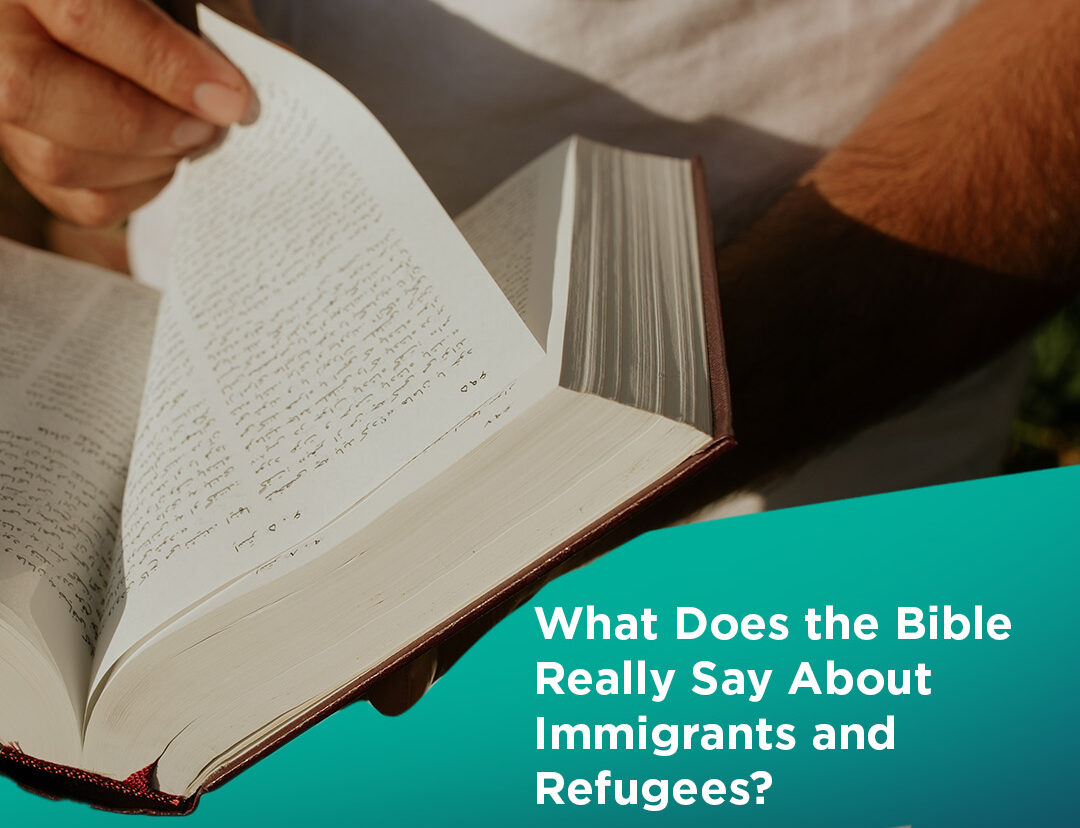Two Arrive Ministries staff members spent two weeks in Kakuma Refugee Camp in Northwest Kenya in November 2015, to get a better understanding of what our refugee friends’ lives look like in the refugee camp. Jessica Wills, Refugee Life Ministries Program Director shares her reflections on life and the church in Kakuma Refugee Camp.
Living, Not Surviving
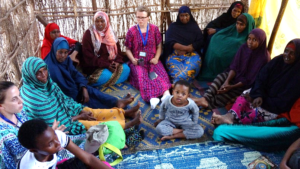
A group of women sit in a circle with Jessica and Michelle
Since I have been back to Minnesota, I have often been asked, “How was your trip?” I want to represent the voices of the refugees well as I answer; they are a voiceless people and deserve to be heard. But how do I describe the hopelessness I saw in so many eyes? How can I accurately portray the desperation we heard in so many voices? As I began to reflect on the suffering we witnessed, God reminded me of the thorn trees we saw in Kenya. The trees themselves looked entirely dead, gray and brittle. Each branch had hundreds of 3 to 4 inch thorns which could easily cut through the sole of a shoe. Yet, in a miraculous contrast to this lifeless, piercing tree, there were small, yellow flowers on some of its branches. Despite the tree’s haunting and dark look, there was somehow still beauty and life.
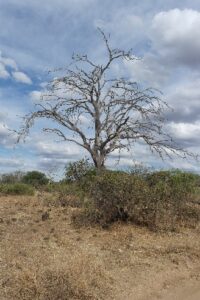
A Thorn Tree in Kenya
In the same way, Kakuma was a dark place. As one refugee put it, “People are surviving, not living.” The climate was harsh (about 110 degrees Fahrenheit on average), the land was arid, and water was scarce. Due to the drastic increase of refugees in the world (especially in the Middle East), rations have been cut to 75%, and the UNHCR (the UN Refugee Agency) is not able to adequately provide all the needed shelters. And yet, the refugee struggles are so much deeper than basic needs.
No Hope for a Future
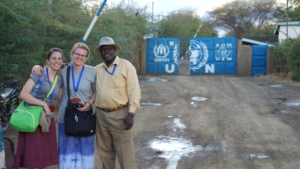
The author, Jessica Wills (R) and Michelle Eberhard (L), both Arrive Ministries staff members
The refugees feel vulnerable and unsafe in the camp. Many experience robberies and assault from local bandits and other destitute refugees. Many women are victims of sexual violence, and many young girls are married off to older men by their desperate families.
In addition, refugees do not have a hope for a future. They do not have permanent residency or the right to work in Kenya, and they are not allowed to leave the camp without permission from the government. They cannot go home for fear of the unrest in their home countries, and only one percent of the refugees in Kakuma will ever get the opportunity to be resettled to another country like the United States. Therefore, in the words of the refugees, their children’s future is in the “prison” of Kakuma.
Many of the refugees have been “surviving” in Kakuma for twenty years, and the harshness of life in the camp is etched on their faces. We saw many eyes full of hopelessness and despair. The almost 200,000 refugees in the camp are just wasting away, and it is crushing to know that there is no known solution. I can’t forget their faces, and I can’t forget the sorrow they spoke of. Words cannot adequately describe the darkness in that place.
The Church Providing a Hope
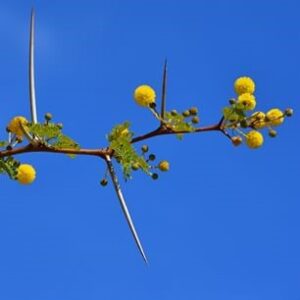
Yellow Flowers Blossoming on Thorn Trees
Yet, somehow, just like the thorn tree, we saw a small glimmer of life in that place. The “life” was in the church. Indeed, the refugee churches were like the yellow flowers that didn’t fit the thorns of their surroundings. In the midst of such a hopeless situation, we saw hope and peace in the eyes of our newfound brothers and sisters in Christ. In that dark “prison,” they were sorrowful, yet full of joy.

Christian Believers in Kakuma Refugee Camp
My eyes teared as one pastor told of how God has a purpose for every refugee believer in the camp, and he challenged other believers to be content in their circumstances (even in that desolate place!). He went on to say that the most important thing of all is “intimacy with Christ” – that “nothing else matters, whether you are in a refugee camp or in America.” Hearing those words in Kakuma was shocking and beautiful.
The faith of the believers in Kakuma proved to me that God has not closed his eyes to Kakuma. He has not allowed the thorns to consume the beauty of the flowers. He hears the cries of sadness, and He is present in that place. We saw Him through His people.
In Kakuma we were able to meet with:
- National Council of Churches in Kenya (NCCK) – they were phenomenal in hosting us in the refugee camp.
- The United Refugee and Host Churches (URHC)
- UNHCR (UN Refugee Agency) in Kakuma and Nairobi
- The International Organization of Migration (IOM)
- Bhar-el-Naam Primary School (all girls school)
- Numerous individual refugees and local Kenyans (we were hosted on Sunday by a local Turkana church)
Read another account of life in Kakuma written by Arrive Ministries Director of Arrival Services, Michelle Eberhard.
This trip was made in partnership with the International Association for Refugees (IAFR), and many of the pictures above are from Tom Albinson, the president of IAFR, who made the trip possible.




